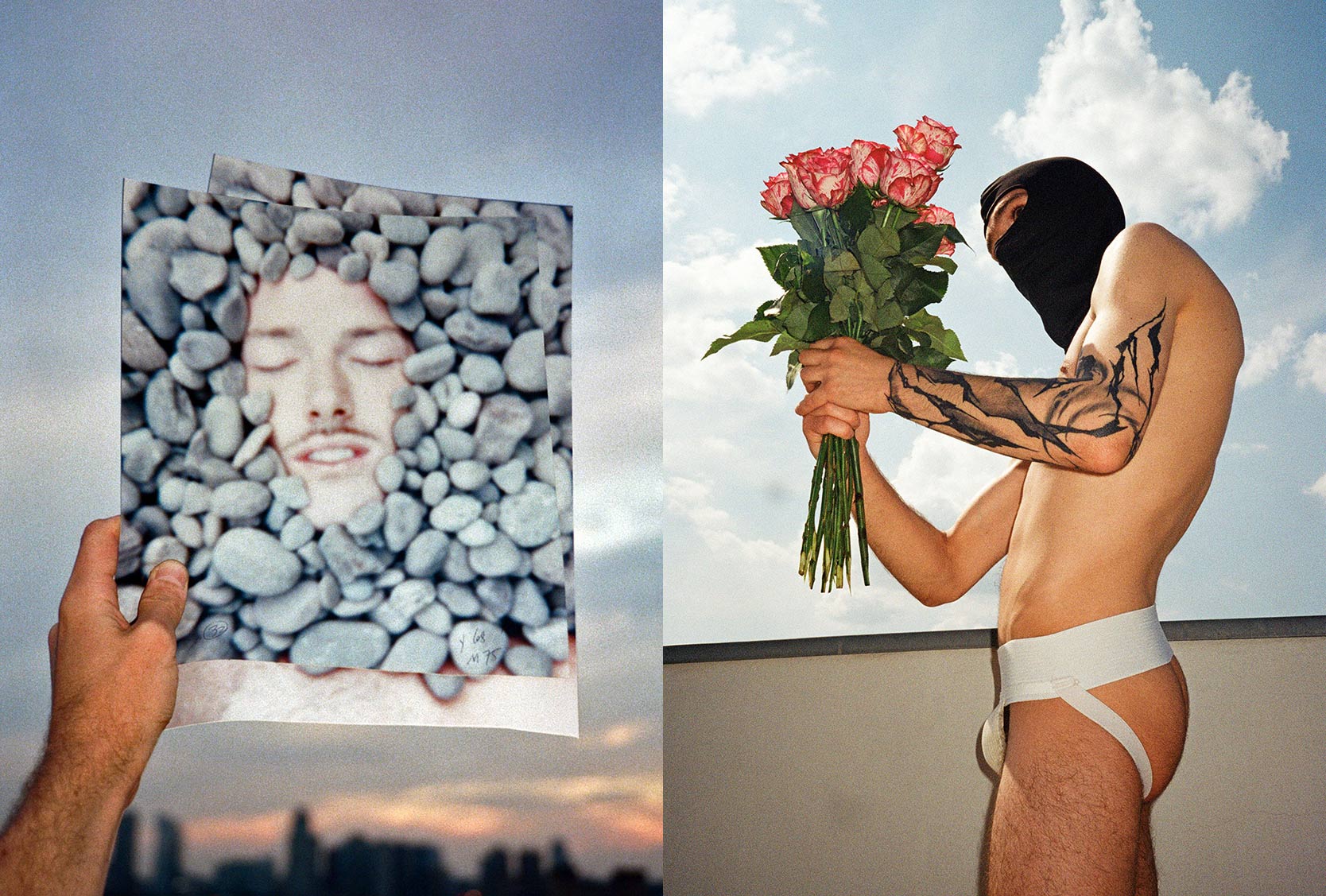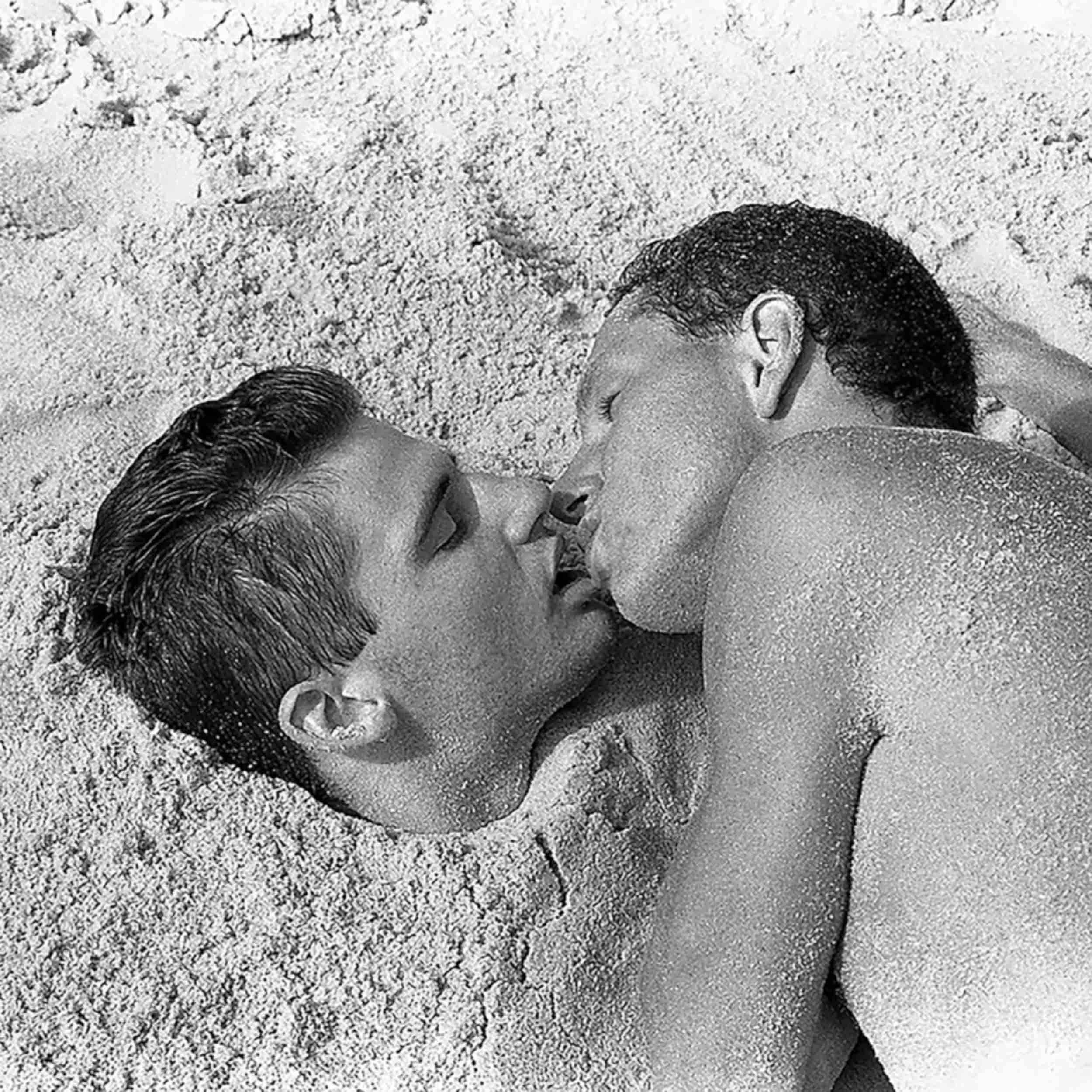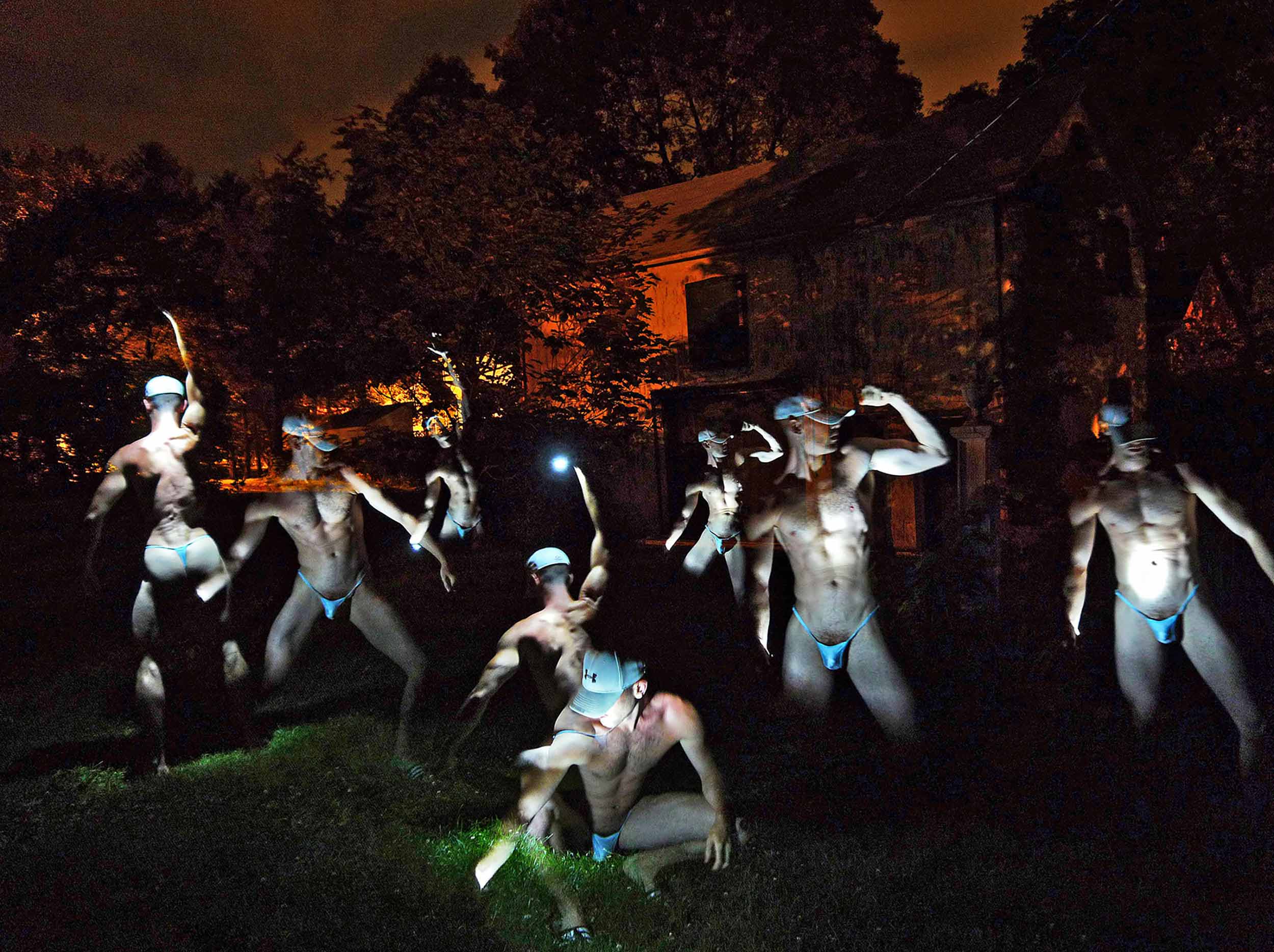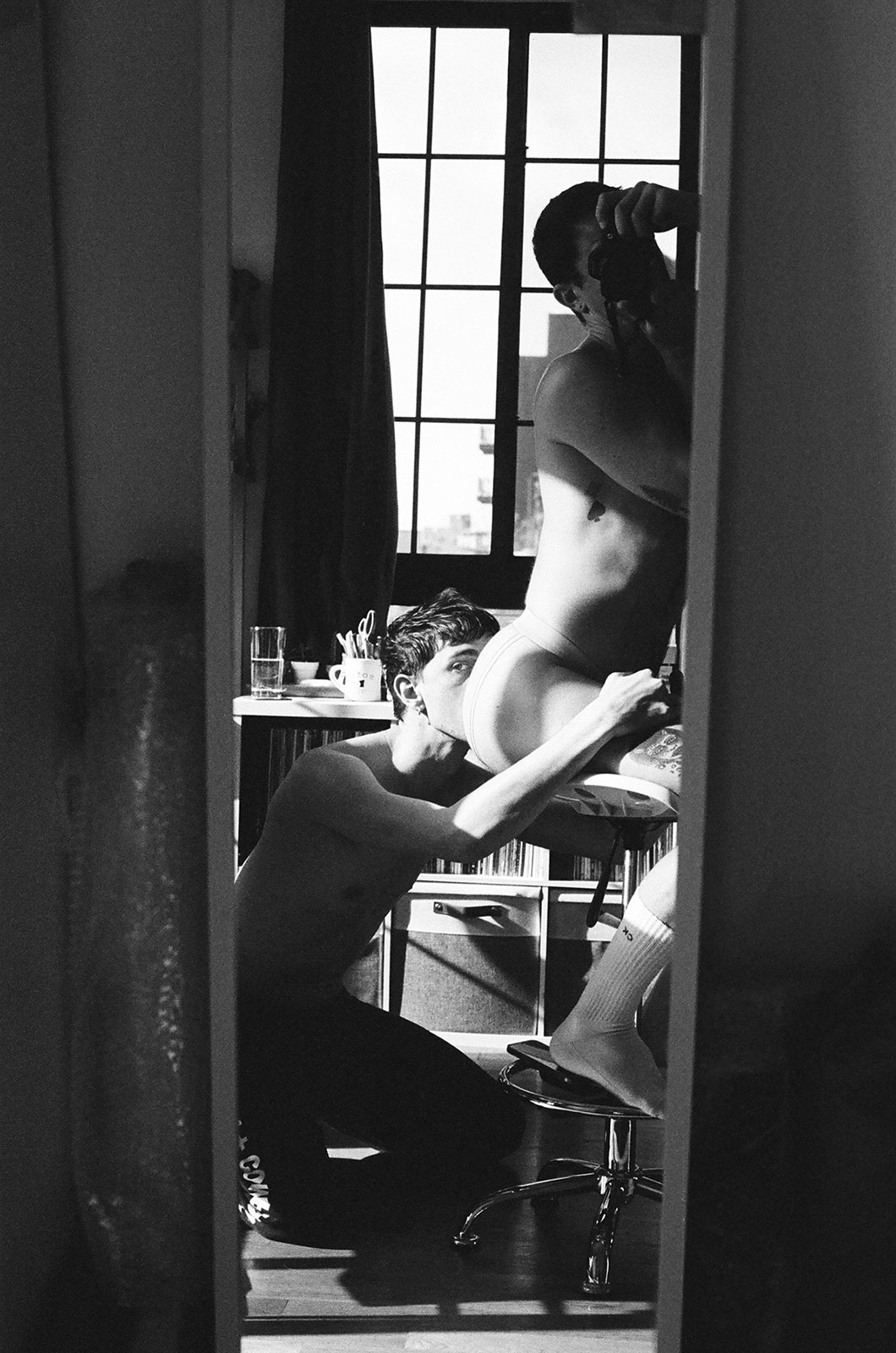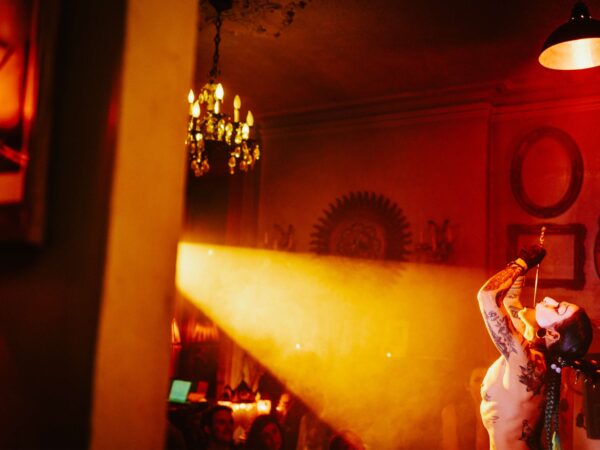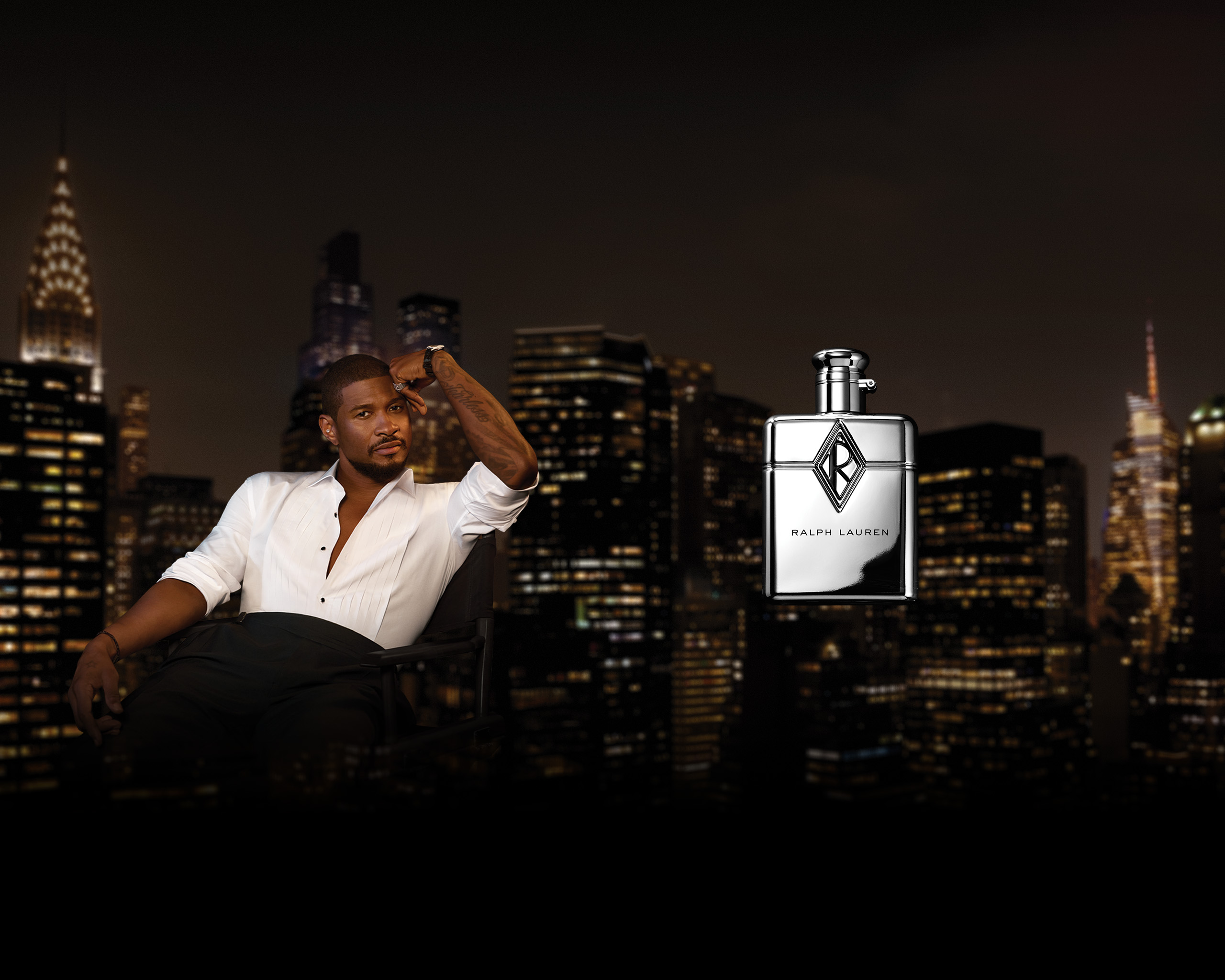Photographer Slava Mogutin unites 28 artists across generations for an exhibition at the Bureau of General Services—Queer Division
Last Wednesday, a group of artists and onlookers gathered at the bookstore Bureau of General Services—Queer Division at the LGBT Community Center for a walkthrough of My Romantic Ideal, the photography exhibition curated by Slava Mogutin showcasing 28 queer artists exploring the politics of love, intimacy, and desire. “The title of the exhibition reflects the tension between societal expectations of romance and the deeply personal, rebellious, and liberating expressions of love and desire that queer artists present,” Mogutin explained in his curatorial statement. Against the backdrop of rising censorship and institutional homophobia, the show offers an unflinching look at queer romanticism in all its contradictions—raw, playful, mournful, and defiantly tender.
The show, which opened on May 1, runs through August 31. Below, a selection of the featured photographers reflect on what romance means to them now.
Slava Mogutin (Curator)
“We live through this universal conservative backlash where homophobia and anti-trans bigotry are on the rise. The space for radical queer imagery is shrinking rapidly… This show is about creating a space for artists who can’t simply show their work at most institutions or commercial galleries. It’s a multicultural and multigenerational project, bringing together 28 artists from 14 countries—each exploring their own romantic ideal.”
Robert Flynt
“Initially I sent Slava very sexually explicit work, but I realized—that’s not really my romantic ideal. So I turned to this series: figures printed onto century-old maps of Manhattan. It became about imagining what might have happened in those streets. Maybe that’s the romance—a mythical ideal whose power lies in its unobtainability.”
Stanley Stellar
“I’ve spent my life trying to answer the question: What is a gay life? Who are we? My photographs are about us seeing each other, the way only we can. Every image I’ve printed is like a child to me—I remember the moment, the feeling, the connection. That’s what photography is: proof that we’ve lived, that we’ve loved, that we’ve been beautiful.”
Benjamin Fredrickson
“This show gave me the chance to finally share intimate images I’ve sat with for years. My romantic ideal isn’t just a person—it’s a practice. Self-portraiture, experimentation, obscured faces, and erotic ambiguity. Photography is collaboration. And sometimes the most powerful image is the one that lets the viewer project their own desire onto it.”
Brian Kenny
“At the time I made that self-portrait, I was go-go dancing a lot—exposing myself several times a week. It felt like multiple exposures of the body, so that’s what I did photographically. I’m interested in the projection we put on others. What are we really seeing—someone else, or just our fantasy of them?”
Gio Black Peter
“Most of my photos document horny adventures with friends and lovers. But really, they’re all self-portraits. I’m using other people to show myself. What made this show special is that it was uncensored. That’s rare for queer artists. My romantic ideal? Other artists—people who make themselves vulnerable through their work.”
Ross Collab
“These photos had been sitting on a hard drive for years. They’re deeply intimate moments with my partner of ten years—snapshots of our love, our life, our play. My romantic ideal is him, and the way we see each other through our cameras. These are about longing, tenderness, and that ineffable thing that keeps two people connected.”
Jan Wandrag
“I call what I do non-straight street photography. I collect images obsessively—boys on the street, screenshots, Grindr profiles—and weave them together digitally like modern-day tapestries. These works are made from hundreds of pictures: old masters’ paintings, selfies, art history, queer life. My romantic ideal is somewhere in that weave.”


